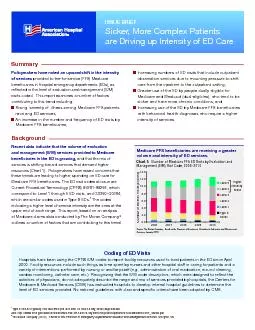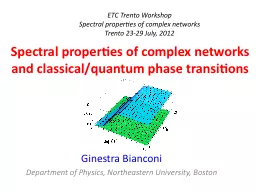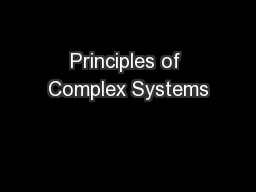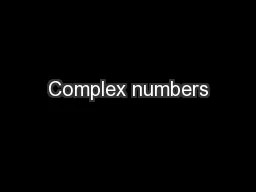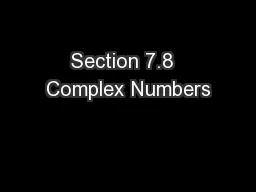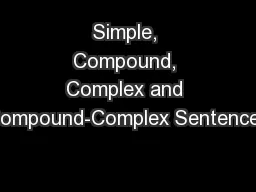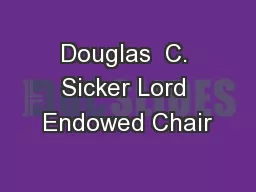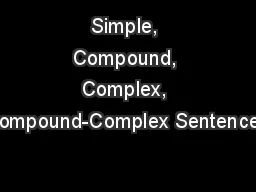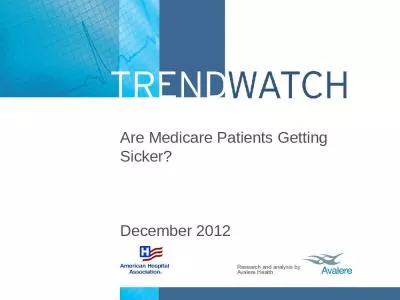PDF-Sicker, More Complex Patients
Author : liane-varnes | Published Date : 2015-10-22
ISSUE BRIEF are Driving up Intensity of ED Care Recent data indicate that the volume of evaluation and management EM services provided to Medicare beneciaries in
Presentation Embed Code
Download Presentation
Download Presentation The PPT/PDF document "Sicker, More Complex Patients" is the property of its rightful owner. Permission is granted to download and print the materials on this website for personal, non-commercial use only, and to display it on your personal computer provided you do not modify the materials and that you retain all copyright notices contained in the materials. By downloading content from our website, you accept the terms of this agreement.
Sicker, More Complex Patients: Transcript
Download Rules Of Document
"Sicker, More Complex Patients"The content belongs to its owner. You may download and print it for personal use, without modification, and keep all copyright notices. By downloading, you agree to these terms.
Related Documents

